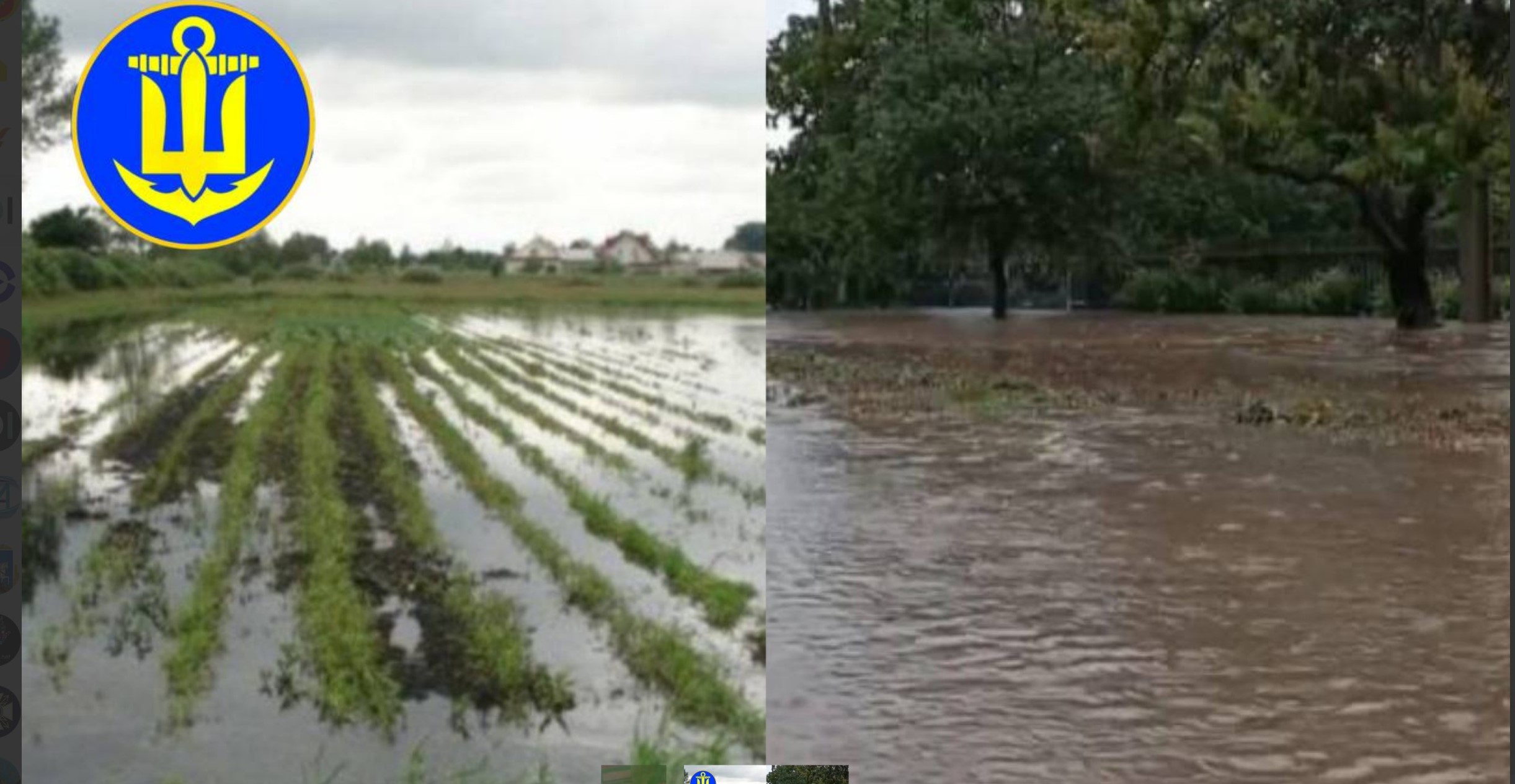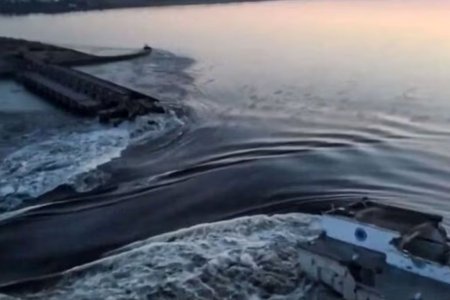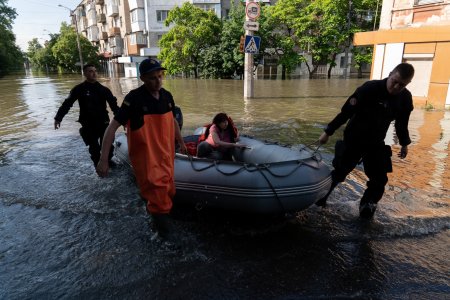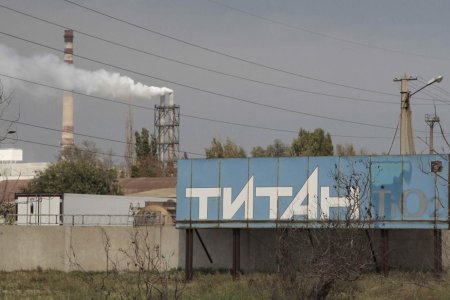
It is not only the warnings since October 2022 that Russia might destroy the Kakhovka Dam, and, more recently, that the invaders were overfilling the dam, that cast doubts over Russia’s attempts to blame Ukraine for the catastrophic disaster now unfolding in Kherson oblast. Russia is also either building or destroying dams in occupied parts of Zaporizhzhia oblast, with its aim clearly to flood the territory and thus impede the Ukrainian Armed Forces’ anticipated counter-offensive.
The Centre for Journalist Investigations [CJI], citing local residents, reported on 7 June that the Russian invaders are either destroying dams on reservoirs or erecting them to ensure that the water overflows and floods roads and fields. It is assumed that the aim is to create bog-like conditions in the hope that this will prevent the advance of Ukraine’s Armed Forces.
CJI’s contacts have sent photos from the outskirts of occupied Tokmak, where, on the exit in the direction of Berdiansk (also under occupation), the Russians have erected a dam near the bridge over the Tokmachka River. The dam has resulted in a significant increase in the water level, with the shores overflowing. According to the head of the Tokmak municipal military administration, Oleksandr Chub, there is no immediate danger to people’s homes, however fields on the outskirts of the city have already been flooded. CJI has also learned of similar danger of flooding near the village of Udarnyk between the Tokmak and Pryazovske raions. The Russians have also destroyed a dam separating ponds from the River Molochna with this likely to lead to fields being flooded around Udarnyk and Hrushevka.
Berdiansk Online posted photos of local flooding and reported that “the occupiers are organizing local ‘Kakhovka’ [disasters] in Zaporizhzhia oblast. The Telegram channel noted that there had been earlier reports of such deliberate flooding of land in the Yakymivka raion . On 6 June, they added, it was learned that the Russian military had first filled private ponds around the villages of Chornozemne; Peremozhne; Viazivka; Petrivks and others to the maximum water level and then bombed the dams. This has led to the road to Kherson being flooded, as well as agricultural land. The flooding caused by the bombing of a dam in Chornozemne can be seen here.
None of this compares in scale to the tragic consequences from the flooding caused by the explosion that ripped apart the Kakhovska Dam, but there are suspicious similarities. There had been complaints over the last two months of a dangerously high water level in the reservoir behind the Kakhovka Dam, and of local flooding caused by this.
In an interview to Donbas Realities on 7 June, Ihor Syrota, Director General of Ukrhydroenerho, dismissed Russia’s attempt to blame Ukraine for the disaster, claiming that the dam had been damaged by Ukrainian shelling. Although the Kakhovka Hydro-Electric Power Plant is on territory under Russian occupation since the beginning of its full-scale invasion, Ukrainian staff had remained at the plant until October when it was taken over entirely by the Russian military and used for their purposes. From then on, Ukraine’s leaders had warned of the danger that Russia might blow up the Dam, with the Institute for the Study of War also suggesting that there was such a danger. Syrota and Ukraine’s Military Intelligence [HUR] are in no doubt that the damage was caused by an explosion from inside the power plant.
Syrota points out that you can see a rift in half of the power plant which could only have happened if the explosion was inside the station. This view appears to be shared by the New York Times, and the experts they spoke with. One of these, Nick Glumac, an explosives specialist and Professor of Engineering at Illinois University, stated that even a direct hit from a warhead would not have destroyed the dam as the amount of explosives it can carry is limited.
The Kakhovka power plant cannot be repaired, Syrota says, and warns that there were over 450 tons of machine oil at the plant, with over 150 tons having already been spilled into the river. Whether the reservoir is emptied fully will depend on whether the dam was destroyed at its bottom or not. Judging by the damage visible, however, he assumes that there is a 90% likelihood of the worst scenario, with the reservoir being totally drained in the space of four days.
Asked whether he believes that this was a deliberate explosion and result that the Russians were seeking, Syrota notes that in everything since 24 February 2022, there is a constant lack of logic. On the other hand, you need only look at the atrocities and devastation that the Russians left behind them in Bucha, Mariupol, Volnovakha, Bakhmut, etc., to see that they have, what he calls, a barbaric approach. “They understand that the counter-offensive is underway, and they simply detonate and dismantle everything that can be destroyed or dismantled. For them, nothing has any value.”
Throughout the world, such actions against nuclear or hydro-electric power plants cannot be viewed as anything but acts of terrorism.
Judging by the reports coming from Kherson oblast, the Russian invaders are also doing little to rescue residents of places on the left bank of the Dnipro under Russian occupation. They are, reportedly, prohibiting people from trying to evacuate themselves, with the only alternative they offer being ‘evacuation’ to Russia, According to Yury Sobolevsky, First Deputy Head of the Kherson Regional Council, the Russian military are not helping residents to escape the flooding, and are instead obstructing volunteers trying to help others to evacuate. There have even been reports of the military attempting to extort money for ‘permission’ to leave in boats or free people clinging for their lives to roofs, which are often all that remain above water.



